MacBook Air 11-inch vs. 13-inch: Which ultralight laptop should you get?
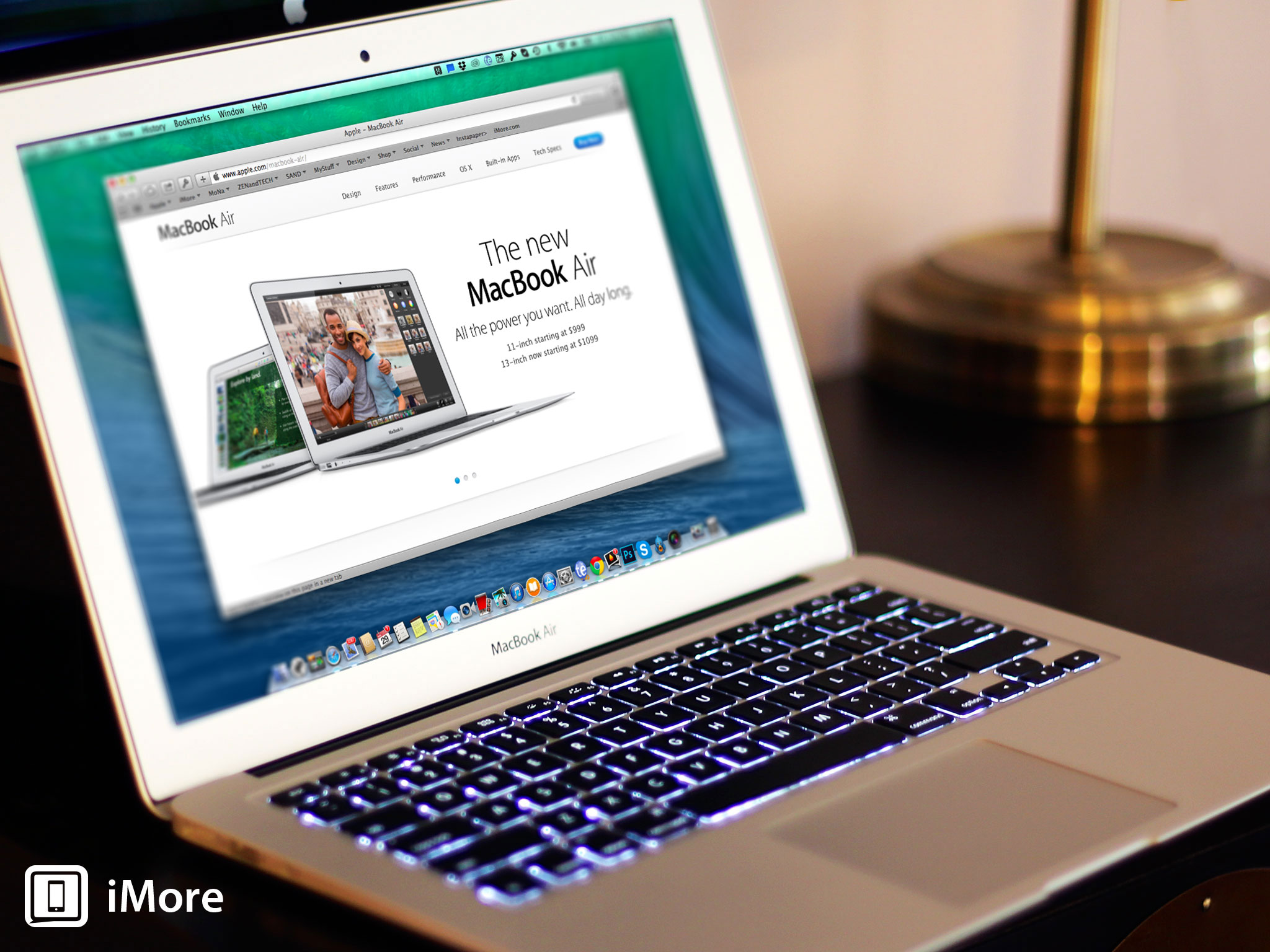
We've already compared MacBook Airs and MacBook Pros, and you've decided that the svelte MacBook Air is right for you. Now you have to decide which MacBook Air is right for you - the smaller 11-inch model or the larger 13-inch version? Also, what configure to order options make the most sense? Let's have a look.
Originally published in 2014, we've updated this article with info about the 2015 models.
Comparing MacBook Air models
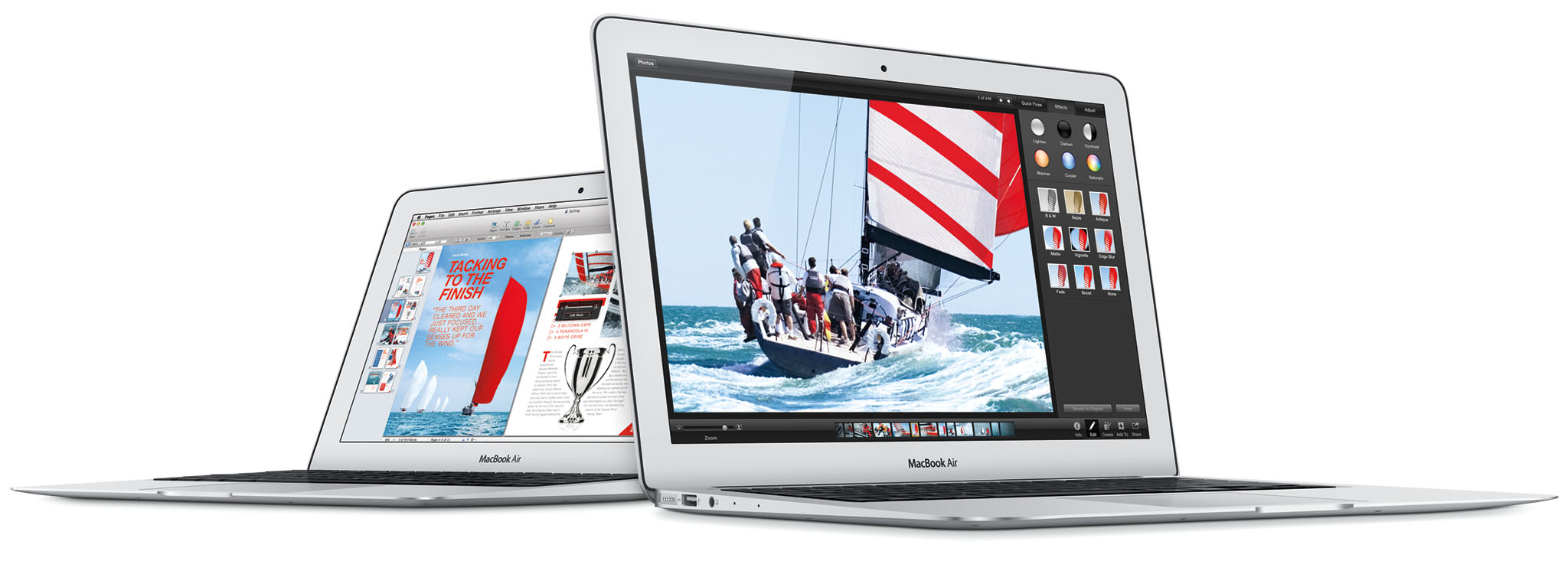
The 11-inch MacBook Air is Apple's least expensive laptop - its entry-level system, if you will. For that, you get a system equipped with an 11.6-inch display (measured diagonally) that can display 1366 x 768 pixels natively. You also get 4 GB of RAM and 128 GB of flash storage. You can double the storage capacity for another $200.
Priced only $100 more than the base model 11-inch MacBook Air at $999, the 13-inch MacBook Air's 13.3-inch display shows 1440 x 900 pixels natively, but under the hood it's very similar - 4 GB RAM and 128 GB flash storage. Like the 11-inch model, you can double storage capacity to 256 GB for another $200.
With their lids closed, both MacBook Air model rise barely more than half an inch above the table. Tapered from front to back, they're 0.11 inches at their lowest point and 0.68 at their highest. The 11-inch model is less than a foot wide (11.8 inches) and the 13-inch model is 12.8 inches wide. The 11-inch is lighter by slightly more than half a pound - 2.38 pounds, compared to the 13-inch's 2.96 pounds.
Both systems come equipped with 802.11ac networking and Bluetooth 4.0 support, and both come equipped with stereo speakers. Also, both sport backlit keyboards with an ambient light sensor that automatically adjusts the backlighting brightness. And despite the 11-inch's diminutive proportions, the keyboard is the same size as its 13-inch cousin, so you make no compromise there, either.
All systems now come equipped with OS X 10.10 Yosemite along with the latest personal and productivity software for Mac, including Pages, Numbers and Keynote, Apple's answer to Microsoft Office.
Master your iPhone in minutes
iMore offers spot-on advice and guidance from our team of experts, with decades of Apple device experience to lean on. Learn more with iMore!
The MacBook Air in its standard configuration provide you with a spectrum of buying choices from $899 to $1,299, butting up against the base model 13-inch MacBook Pro with Retina display (and more than the legacy 13-inch MacBook Pro still in Apple's current product matrix). But you can spend almost $1,800 if you murder out a 13-inch MacBook Air with all options.
Let's start to compare systems and see what options makes sense.
Maximum portability vs. more screen real estate: How much difference does two inches make?
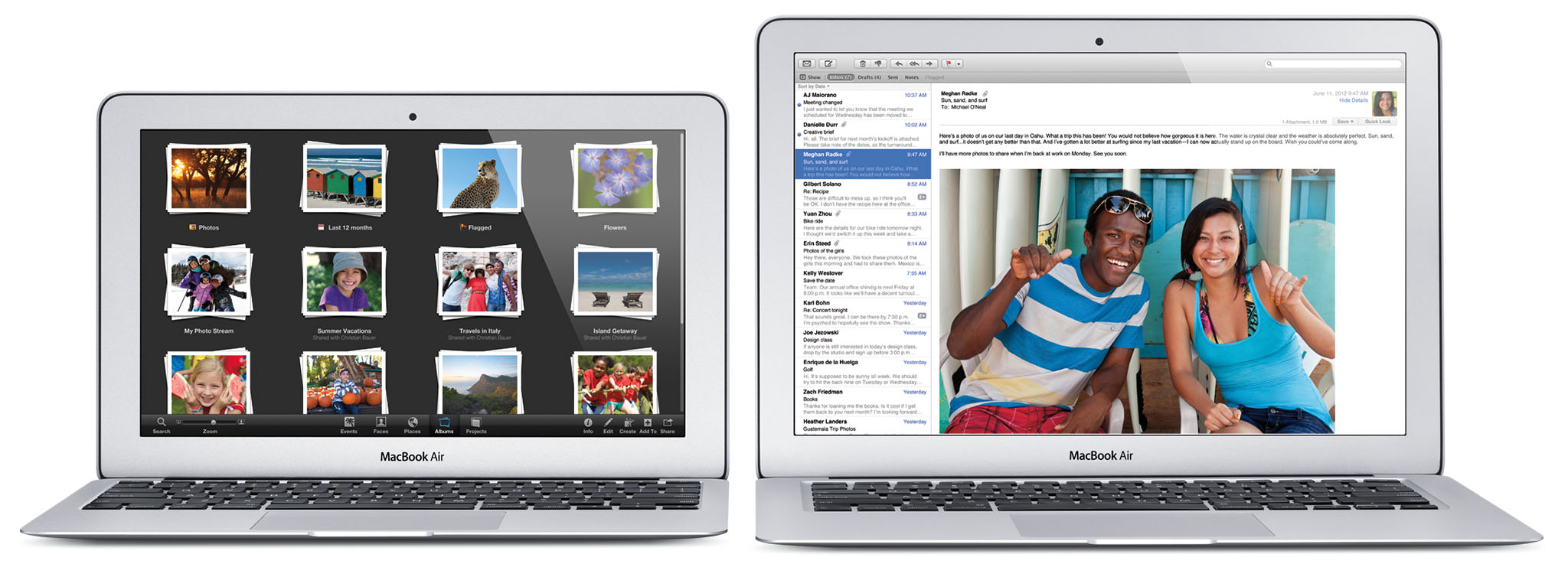
The 11-inch MacBook Air is a bit of an odd duck: it's the only laptop that Apple makes with a 16:9 aspect ratio. The 13-inch MacBook Air and every MacBook Pro sports a screen with a more conventional 16:10 aspect ratio instead.
This gives the 11-inch MacBook Air a decidedly more cinematic feel to it, despite the tiny size. That's the same form factor you'll find on your flat-screen HDTV, for example. The same aspect ratio used in movies. In practical use, this means that you see more width than you do height. So the 11-inch MacBook Pro generates wider, shorter windows than its 13-inch brother.
At 135 pixels per inch, the overall pixel density of the 11-inch MacBook Air is a bit higher than the 13-inch model's 128 PPI - measurable but not huge. The net result is that stuff looks just a smidge smaller on the 11-inch MacBook Air.
Some users love the wide screen; others hate it and claim that the screen is too small. It's very subjective, so my advice is to compare both to see what works best for you.
The resolution of the 13-inch MacBook Air is 1440 x 900. It's actually the same size as the 13-inch MacBook Pro sans Retina display, but with higher resolution. It's higher-res but not Retina - and that's an important distinction to make - Retina display is not an option on either MacBook Air model. That undoubtedly helps the MacBook Air with its amazing battery life, but it also puts it at a disadvantage for users looking for the best-quality graphics and text reproduction on their laptop.
Having said that, we survived for years without Retina display systems - if you don't have it, you may not miss it. And the 13-inch MacBook Air gives you a decent amount of screen real estate to do what you need. If the screen gets too cluttered, fire up Mission Control and create a second desktop space.
Light weight vs. freedom from power outlets: How long can each MacBook Air last without charging?
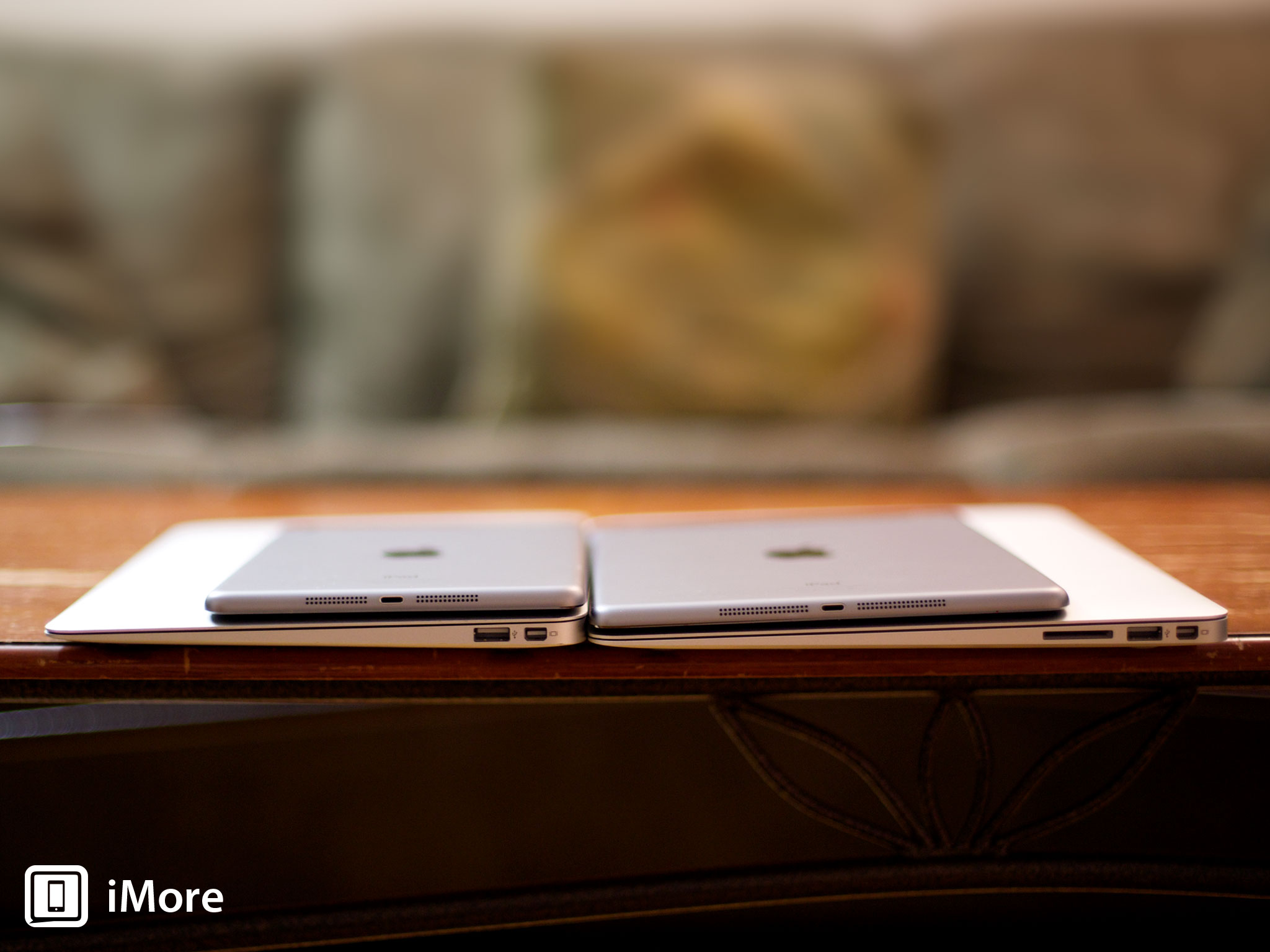
Screen size isn't the only fundamental difference between the 11-inch and 13-inch MacBook Air. Because it's bigger, the 13-inch MacBook Air can pack more battery capacity inside than the 11-inch, as well. Inside the 11-inch MacBook Air is a 38-watt-hour battery, and inside the 13-inch is a 54-watt-hour battery.
Both MacBook Air models have outstanding battery life, thanks in part to the use of Haswell processors inside. Intel's Haswell chips have a smaller die size than previous processors and are more power-efficient, which means laptops that use them like the MacBook Air can last longer on a single charge.
Apple estimates the 11-inch MacBook Air model can go up to 9 hours without recharging, while the 13-inch can go up to 12 hours. So if all day battery life is a consideration, the 13-inch MacBook Air may be the better alternative.
Slender design vs expansion: What can you connect to the MacBook Air?
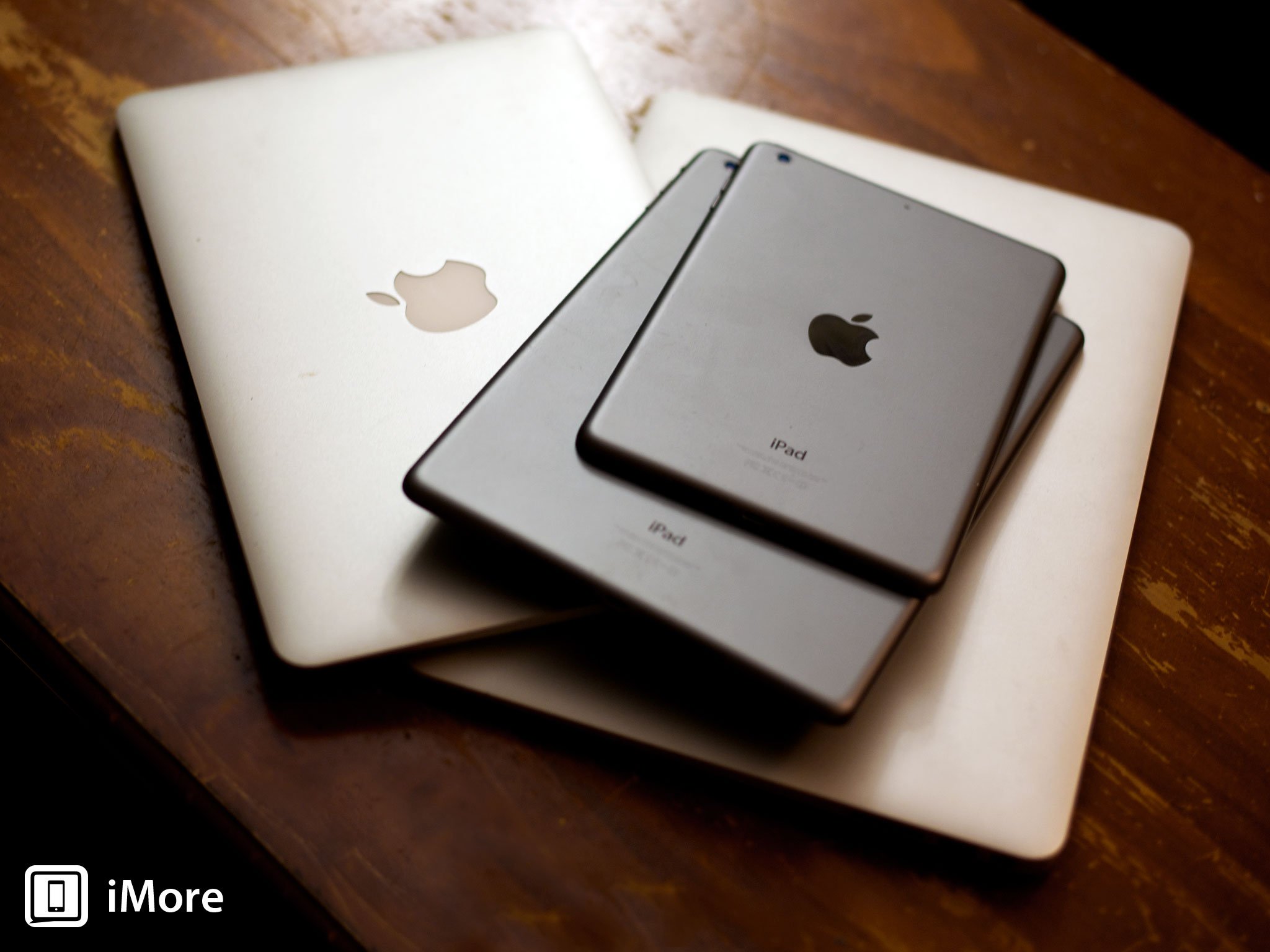
Both the 11-inch and 13-inch MacBook Air come similarly equipped - a 720p FaceTime HD camera embedded in the center of the bezel above the screen, a 1/8-inch headphone jack, dual microphones (better audio quality when recording your voice or using Skype or Facetime), two USB 3.0 ports (one on each side) and a single Thunderbolt 2 port on the right side, suitable for driving an external display with up to 2560 x 1600 pixels at millions of colors (the resolution of Apple's own 27-inch Thunderbolt Display), while simultaneously operating its internal display.
There is one key difference between the two machines, however: the 13-inch MacBook Air also sports an SDXC card slot on its right side. If you use or plan to buy a digital camera that writes to SD card, and you plan to use your MacBook Air to edit and catalog photos and videos shot with that camera, the 13-inch may be a better choice.
Is more RAM worth it?
4 GB of RAM is the standard across the line, and it's perfectly sufficient to run Mavericks and any normal productivity apps and Internet apps that you might need to.
If you're working with really memory-intensive apps - image-editing apps, video editing apps and music-making apps, for example - or if you're planning to run a lot of applications simultaneously - going with 8 GB may be worth it. It'll certainly give you more head room.
Upgrading to 8 GB may "future proof" your MacBook Air a little more further down the road, as well. Apple's steadily increased the amount of base RAM it includes in laptops to give them more headroom for beefier performance; my late 2010-era MacBook Air came with 2 GB, and it's feeling the pinch now that it's running Mavericks.
It's important to note here that you have to order your MacBook Air with the amount of memory you think you'll need, because it's soldered to the motherboard. You can't upgrade after the fact. So consider your needs carefully.
Is more flash storage worth it?
Likely be the most difficult decision when buying a MacBook Air: Deciding how much storage is sufficient. If you're migrating from another Mac, chances are you have files you want to bring over. Applications too. How much storage do you need? And how much can you offload?
Compared to the 500 GB hard drives that have become common in laptops in recent years, 128 GB of flash storage is scant space. Chances are you're going to have to pare down, perhaps dramatically. If there are infrequently used files that you've archived but you still want to keep, this may be an opportunity to offload to an external hard drive, server, or even cloud service. And judicious use of iCloud as a repository for some files may be a good idea as well.
Having said that, you do have options. The 256 GB configuration of either the 11-inch or 13-inch MacBook Air is $200 more - $1,099 and $1,199, respectively. And if you don't think that's enough, you can double it again from 256 GB to 512 GB.
Any way you slice it, flash storage is pricey.
Past MacBook Air models have been upgradable. Third parties specializing in SSDs designed to work in older MacBook Air models don't yet have SSD upgrades for the newest MacBook Airs, so you're stuck with what you get from the factory. And if you run out of space inside, you'll need to offload files one way or the other.
Is an i7 processor worth it?
With clock speeds way below MacBook Pros and some PC laptops, the MacBook Air looks on paper like it should be a pretty anemic performer, but looks are deceiving. Having flash storage makes a big difference in overall performance, since the CPU isn't bottlenecked by a hard drive. It also helps that the same company that makes the computer makes the operating system that runs on it, and the operating system is thoroughly optimized to take advantage of that hardware as best it can.
Perhaps one of the more intriguing configuration options for the MacBook Air comes with its processor. Across the board, a dual-core 1.6 GHz Intel Core i5 processor is standard. But if you're willing to pony up $150 more, you can replace that processor with a faster 2.2 GHz dual-core Intel Core i7 processor instead.
Beside the difference in clock speed, there are other differences inside the i7. It has more of memory cache, which stores frequently accessed data and can means the i7 works faster and more efficiently. The i5 and i7 both sport "Turbo Boost" technology, which will automatically make the processor cores run faster when needed, for short bursts. That Turbo mode practically doubles the clock speed - 2.7 GHz on the i5, 3.2 GHz on the i7.
Both processors utilize integrated graphics - Intel's HD graphics 6000. While gaming purists and heavy-duty video users may scoff at integrated graphics, they've come a long way. Today's MacBook Airs offer smoother and better graphics performance all around, compared to their predecessor.
All this reinforces that if you're looking for maximum performance, the i7 is a solid $150 spent. But ultimately, it's entirely optional - the standard processor is more than enough for general use.
Who should buy the 11-inch MacBook Air?
If weight and size is your most overriding factor for your laptop, the 11-inch MacBook Air is your machine. It's barely larger than an iPad Air (albeit more than twice the weight), but it's a fully functional Mac computer that can do just about anything you need it to. The 11-inch MacBook Air is also a terrific computer for kids in school and college students looking for a lightweight, flexible system.
There are a couple of compromises you make with the 11-inch model - 20 percent less viewable area on its display than the 13-inch, and the absence of an SD card slot. But if neither of those are significant factors in what you're doing, the lightweight, tiny 11-inch MacBook Air may be your ideal traveling laptop.
Who should buy the 13-inch MacBook Air?
Of the two MacBook Air models, the 13-inch is the better value: its base configuration is only $100 more than the 11-inch, and it offers superior battery life, more screen real estate and SD card support.
For the price difference between a 13-inch MacBook Air and Retina MacBook Pro, you get a significant faster processor and better graphics performance, a much better screen, more memory and storage options (up to 16 GB RAM and 1 TB flash storage), and better expandability to boot thanks to two Thunderbolt 2 ports and an HDMI port. The MacBook Pro with Retina display is also heavier, by about half a pound.
Bottom line: If you're not willing or able to pay for the MacBook Pro with Retina display, or if you want to save weight and don't care about the differences in the two machines, the MacBook Air is a fantastic, lightweight laptop that will get the job done.
- MacBook Air: Everything you need to know
Still undecided?
If you still can't decide with MacBook Air is the right one to choose from, I'd recommend dropping by our [Apple notebooks] discussion forum and posting a question there. iMore has a thriving online community that can help answer questions and offer advice based on their own experience. You're also welcome to post comments here.
The MacBook Air is a fantastic, flexible computer that's easy to carry thanks to Apple's ingenious engineering - feather-light and slim. For road warriors and other who don't want to be encumbered with a heavy computer, the MacBook Air makes a fantastic traveling companion.

